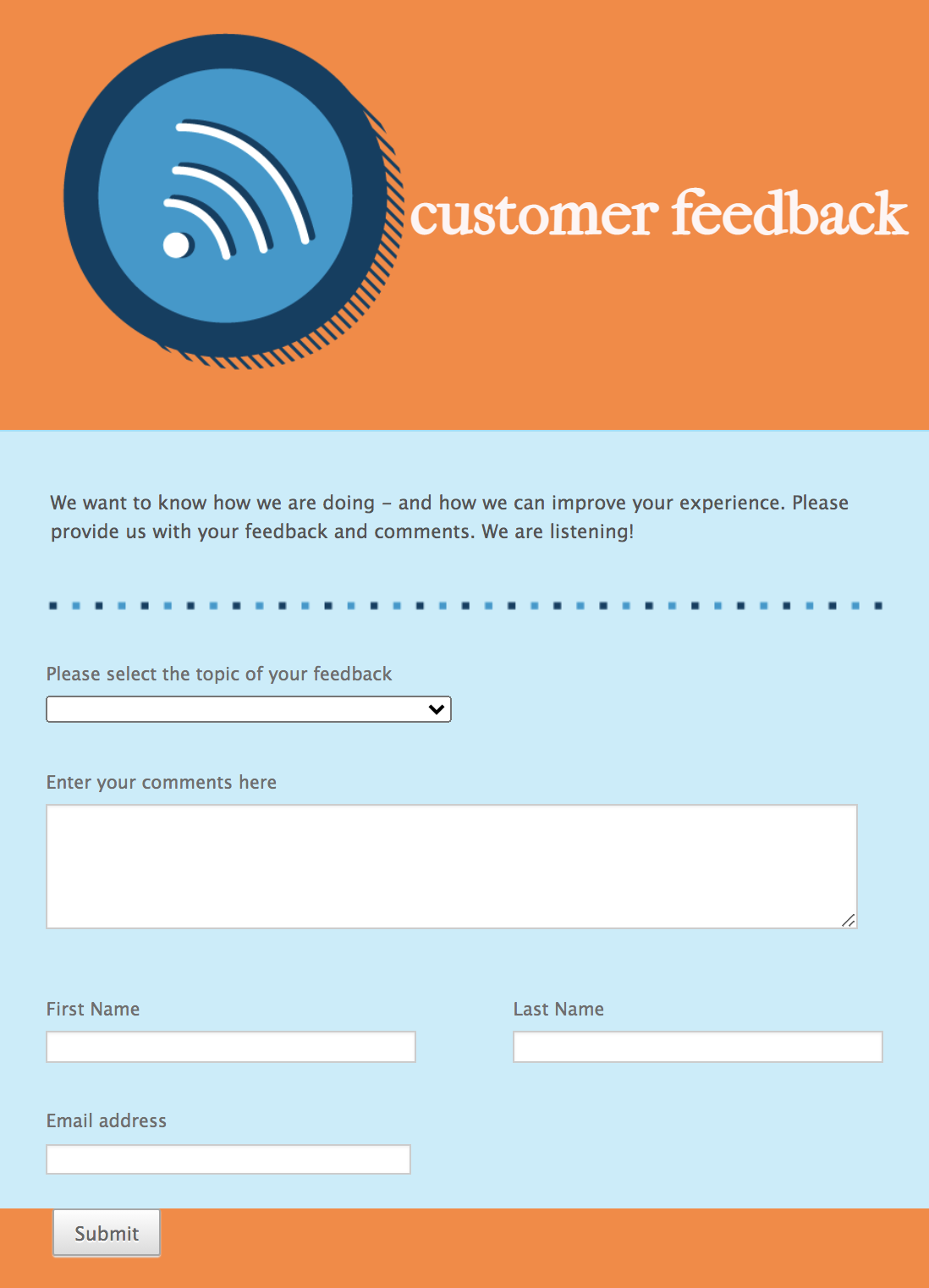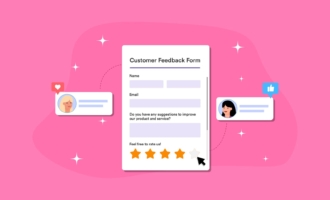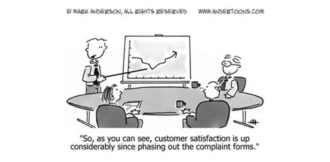Top practices for customer feedback management
- Create many feedback opportunities
- Craft feedback questions carefully
- Get personal
- Pay attention to all feedback
- Categorize and assign feedback
- Centralize and digitize the process
- Follow up on feedback
Want to hear something shocking? Ninety-one percent of customers who have a bad experience with a brand will just leave — without saying a thing! This group is known as the “non-complainers.”
Losing a customer is one thing. Not knowing why or what you could have done to avoid it is even worse.
That’s where customer feedback management comes into play.
Building a strong customer feedback system is the best way to find out what your customers are thinking and to take actions that will stop them from straying.
Before laying the first brick of your feedback strategy, here are seven best practices you should follow:
1. Create many feedback opportunities
Think of customer feedback as a fishing expedition. The more nets you cast, the more you’re likely to find. That doesn’t mean you should throw out feedback requests left, right, and center. Rather, focus your efforts on creating a constant flow of opportunities that allow customers to provide feedback.
For example, businesses can integrate a feedback question at the end of every customer support call. Over time, these responses can build an insightful picture of how satisfied customers are with service quality.
Another way to request feedback is to send periodic feedback questionnaires to long-term customers — perhaps twice a year — to gauge their sentiments. For businesses that provide an online help center or knowledge base, adding a simple feedback question — like “Was this article helpful?” — at the bottom of the page can provide insight into which content needs improvement.
There is no right or wrong way to request feedback. As long as it’s relevant for the specific customer, ask for feedback as often as you can.
2. Craft feedback questions carefully
There are several common customer feedback methods, and each is designed to measure a specific aspect of customer satisfaction. The Net Promoter Score® (NPS®), for example, aims to find out how likely customers are to recommend a business to others. The NPS uses a designated “formula,” so it’s clear what you need to ask.
However, when you’re creating a customized feedback survey or form, there’s a lot more flexibility in the structure and formatting. The best feedback questions are those that prompt the customer to provide actionable insights.
It’s the difference between asking, “Were you satisfied with the service?” and “What was the best aspect of the service you received today?” In the first question, the only possible answers are yes and no. The second question leads the customer to provide a much more specific and detailed response that will help guide the business toward the right action.
3. Get personal
Ninety-nine percent of marketers say that personalization helps advance customer relationships. Imagine how powerful it would be to personalize customer feedback!
Personalization isn’t just about using the customer’s name in an email. Getting personal can mean reaching out to individual customers whenever possible to learn about their experiences in their own words. Your business can build this into the script of customer service phone calls, or you can prepare a call list of specific clients whose opinions might have added value.
Which customers have left in the last six months? Reach out to them with a quick survey and incentive to find out what made them leave. Instead of creating general, anonymous feedback campaigns, try to add a personal touch where possible, and the results will be even more focused.
4. Pay attention to all feedback, both positive and negative
Everyone loves a compliment, and there’s no better feeling than seeing a five-star review or getting top marks on a feedback poll. But don’t be disheartened by negative feedback. It’s actually a gift, as it shows why customers aren’t satisfied and what you can do to improve. This will help you build a more successful business in the long run.
There’s another way to turn negative feedback into a positive force: Show customers a genuine willingness to engage with their complaints and rectify the problems. In fact, according to Harvard Business Review, customers who see their complaints fixed within five minutes go on to spend even more at the company!
Of course, you won’t be able to solve every problem in a few minutes, and you can’t please all of your customers all of the time. But when businesses demonstrate that they care about their customers and are willing to do what they can to help, the goodwill is immeasurable.
5. Categorize and assign feedback
The purpose of customer feedback isn’t just to hear what customers think — acting on feedback can make tangible changes that will boost the business. Improving a product, launching a new product, making service calls more efficient, or shortening delivery times are examples of actions a business might take in response to customer feedback.
However, it’s important to note that a key part of customer feedback management is making sure the relevant feedback gets to the employee who can act on it. For example, the operations manager can’t fix a problem with a product, and the product developer can’t deal with delivery schedules. Therefore, it’s crucial to categorize feedback according to type and assign it to the appropriate team.
You can best accomplish this with a digital feedback log that automatically updates as new feedback comes in — and by assigning all feedback and tracking it to make sure your team is dealing with it appropriately and in a timely way.
6. Centralize and digitize the process
When a solid customer feedback system is in place, you’ll see feedback from many different sources. Part of the challenge of managing customer feedback is properly handling the flow of data.
Digital feedback forms, surveys, and questionnaires are an efficient way to request and collect feedback online, especially when they are integrated with a customer feedback log that manages all the feedback in a spreadsheet-style format. It’s a shame to let important feedback fall through the cracks when there are simple, low-cost ways to automate and centralize customer feedback in an online format.

7. Follow up on feedback
So you asked for feedback, got it, implemented it, and improved your product or service. All done? Not quite!
A good customer feedback system functions like a loop. Customers give feedback; you take action; you receive more feedback, take new action, and so on. It’s a never-ending cycle of opportunity to improve the business.
That’s why it’s so important to follow up with customers after they give feedback. A feedback response lets customers know that you take their opinion seriously, you appreciate it, and you dealt with it. A quick thank-you email explaining the impact of their feedback is an important gesture that will increase the customer’s sense of satisfaction. Make sure to build follow-up procedures into your customer feedback plan so you can keep the loop running.
Build your customer feedback management plan today
Getting customer feedback doesn’t have to be complicated, especially with the help of digital feedback tools that integrate with the same channels you already use to communicate with customers.
Having a framework at your fingertips makes it much easier to get the feedback ball rolling. That’s why businesses should focus on building a customer feedback management system and putting it into place as soon as possible.
Net Promoter®, NPS®, NPS Prism®, and the NPS-related emoticons are registered trademarks of Bain & Company, Inc., NICE Systems, Inc., and Fred Reichheld. Net Promoter ScoreSM and Net Promoter SystemSM are service marks of Bain & Company, Inc., NICE Systems, Inc., and Fred Reichheld.











































































Send Comment: